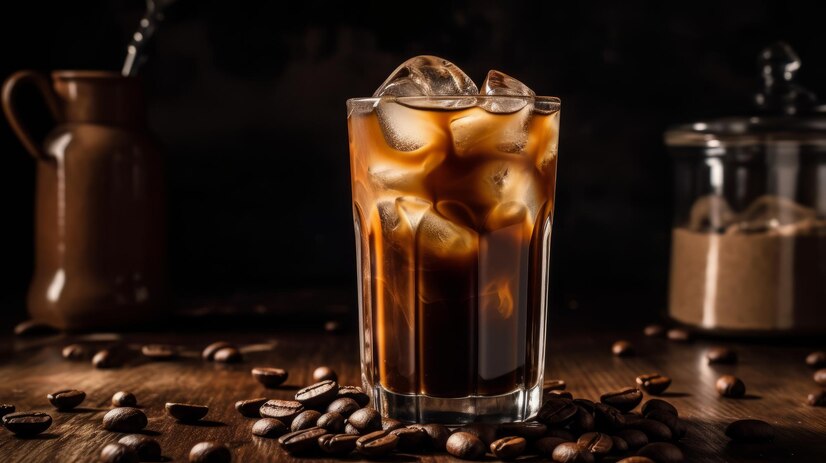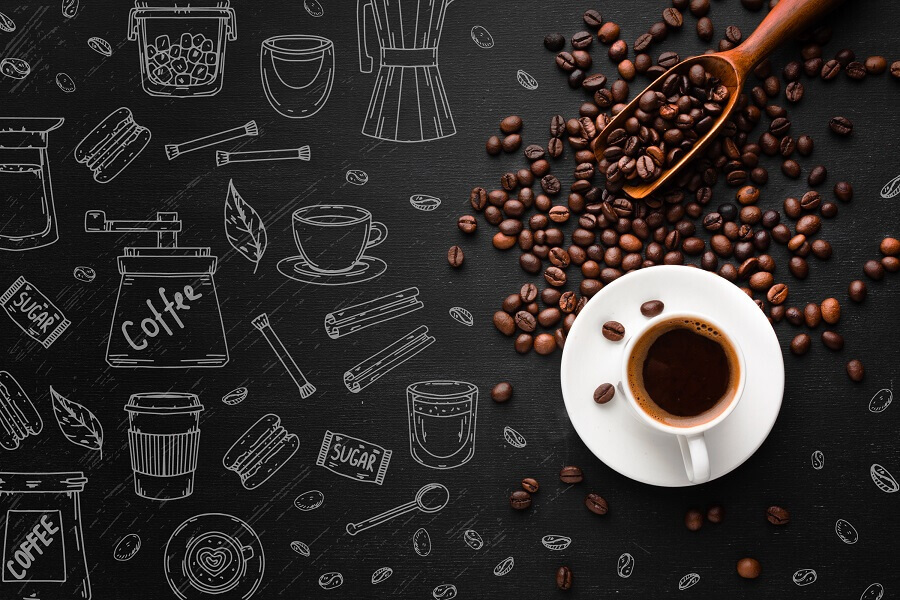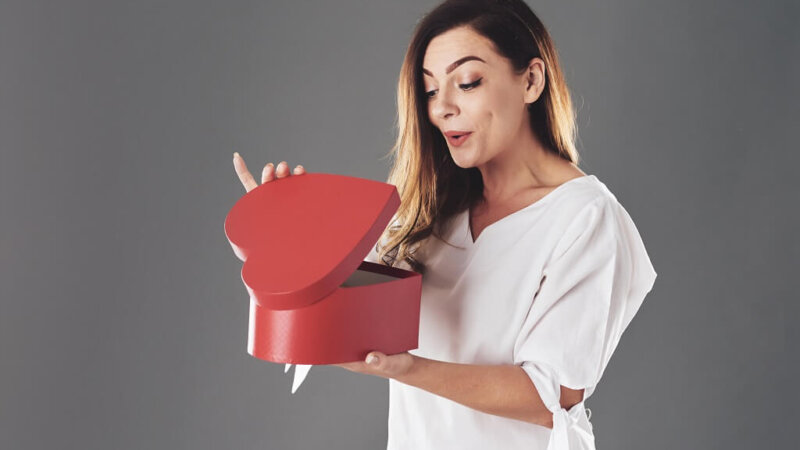How to Choose the Best Coffee Beans for Cold Brews and iced Coffee?
What is a Cold brew?
Coffee that has been steeped for at least 12 hours in cold or room-temperature water is known as a cold brew. The distinctive quality of the cold brew is that it doesn’t require heating. While cold brew coffee has a much slower brewing procedure than other types of coffee, other coffees use heat to swiftly extract their flavour and caffeine.
What is iced coffee?
Coffee that has been brewed hot and then chilled by being poured over ice is known as iced coffee. It is a well-liked and refreshing beverage that is frequently served with milk and sugar to enhance flavour and sweetness. Iced latte and iced Americano are a couple of examples. Since the summer is approaching, it’s the ideal beverage for you at home or at your workplace.

How to choose the best coffee beans for cold brew?
Cold brewing coffee requires a different approach when selecting beans compared to hot brewing. Here are some things to consider when choosing the best coffee beans for cold brewing:
- Roast Level: Medium-Dark roast works best for cold brewing as it has a balanced flavour and a lower acidity level compared to lighter roasts. Dark roasts can be too strong for cold brewing.
- Bean Origin: Choose coffee beans from regions with a known coffee-growing tradition like Karnataka, Tamil Nadu & Kerala. Arabica beans are usually recommended for cold brewing as they have a mild flavour and low acidity.
- Flavour Profile: Cold brewing results in a smoother and less acidic cup of coffee. Look for coffee beans with tasting notes of chocolate, nutty, or fruity flavours. Avoid coffee beans with high levels of bitterness or spices, as these will not taste good when cold brewed.
- Grind: Coarse grind works best for cold brewing as it allows the coffee to steep slowly and extract flavours without producing too much bitterness.
- Quality: High-quality coffee beans are essential for cold brewing. Choose beans that have been recently roasted, as coffee loses its flavour over time. Also, look for speciality-grade coffee beans, as they are more likely to have a consistent flavour and quality.
What is the difference between Iced coffee and cold brew?
The distinction between cold brew and iced coffee lies in the method of brewing. Iced coffee is made by brewing coffee with hot water and then cooling it, while the cold brew is brewed using cold water from the start.
Did you know?
Iced coffee has 165 mg of caffeine.
A cup of Levista coffee for you:
Levista hand-selects coffee beans from their Coorg estates and then expertly roasts, blends, grinds, and processes them to achieve the perfect cup. You can now experience the original flavour of Coorg coffee right in your own home, made from only the finest Arabica and Robusta beans.
Levista is dedicated to delivering the authentic taste of coffee. They grow their beans in the sprawling plantations of Coorg to preserve the coffee’s original, rich flavour. They aim to provide the ultimate coffee experience with their premium quality coffee, offering an intense aroma and smooth flavour in every cup. Enjoy a perfect start to your day with a delicious morning cup of Levista coffee.
Cafe-style cold brew recipe
INGREDIENTS
- 225 gm whole coffee beans
- 8 cups water, preferably filtered
EQUIPMENT
- Coffee grinder
- 2 (3-quart) jars or pitchers with lids
- Cheesecloth
- Rubber band
- Fine-mesh strainer
- Make a coarse grind with the coffee beans. The coffee beans should be roughly ground in a coffee grinder. You might need to grind the coffee in batches depending on the capacity of the coffee grinder. The final product should be roughly the same size as raw sugar.
- In the container, mix the water and coffee grounds. Put the ground coffee in a pitcher or jar with a 3-quart capacity. Put the water in.
- To integrate, stir. Blend the coffee and water by stirring them together slowly. Don’t worry about the coffee rising to the top while it sits; just make sure it gets moist all the way through.
- Coffee should be refrigerated overnight to steep.
- Coffee should be refrigerated overnight to steep. For at least 18 hours or up to 24 hours, cover and chill the cold brew.
- Refine the coffee extract. Set a fine-mesh strainer over a big measuring cup and line it with cheesecloth. Pour the coffee concentrate into the sieve gradually. It might be necessary to strain the coffee in batches, depending on the size of your strainer. Refrain from pressing or squeezing the coffee grinds in the cheesecloth.
- For longer-term storage, pour the cold brew into a clean jar. Transfer the coffee to fresh, airtight jars after straining it for long-term storage. For up to two weeks, cover and store in the fridge.
- Your iced coffee is ready. To serve, put 1 cup of ice cubes in a glass.
Conclusion
Choosing the right coffee beans for cold brews is a crucial aspect of creating a delicious and satisfying drink. It is important to consider the roast level, origin, and flavour profile when selecting your coffee beans.
Light to medium roasts works best for cold brews as they have a brighter and more nuanced flavour, while darker roasts tend to produce a more intense and bitter taste.
Additionally, it is important to consider the origin of the beans as different regions produce coffee with unique flavour characteristics.
Whether you prefer a sweet and fruity taste or a rich and bold flavour, there is a coffee bean out there for every cold brew lover.
So, take the time to experiment with different options, and you will surely find the perfect coffee beans for your cold brews.







